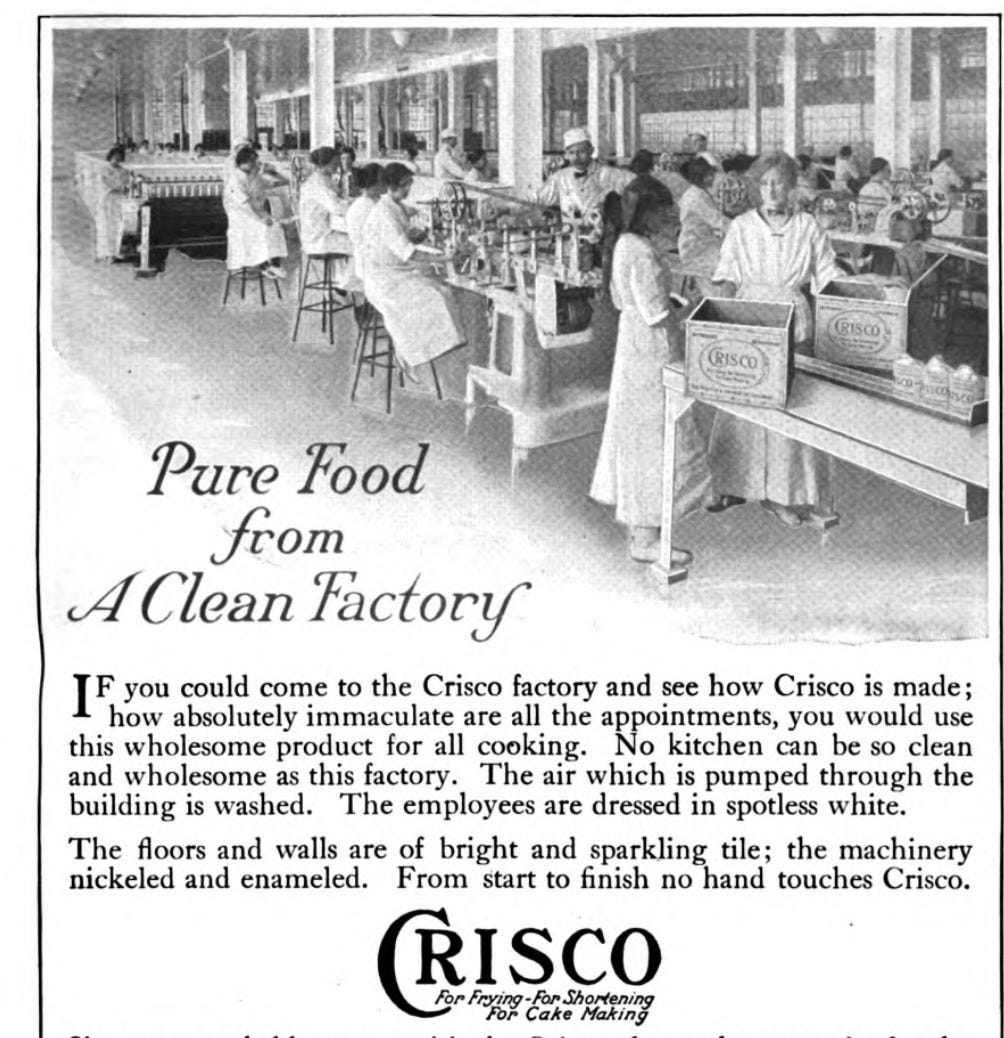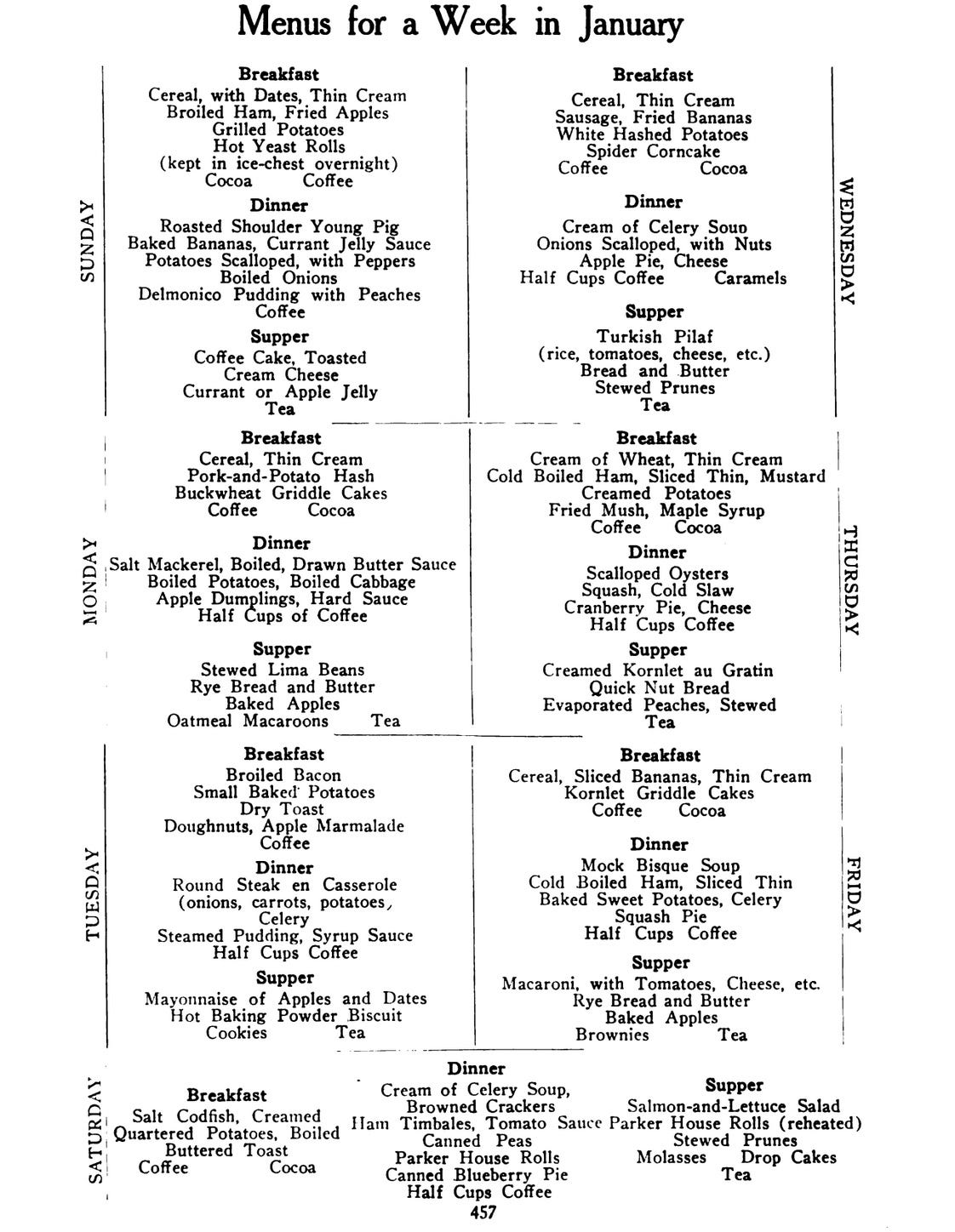For a book proposal I’m working on, I’ve been digging into women’s magazines from the early-to-mid 20th century. The past week my focus has been on American Cookery , a creation of Fannie Farmer’s Boston Cooking School and one of the earliest food and entertainment-focused periodicals.
That I get anything else accomplished is pure willpower. I could happily spend my days and weeks pouring over the recipes and daily menu ideas. I may never make calf’s head jelly, but the blithe manner of the recipe as it suggests splitting the head in two while keeping the tongue intact is impressive, especially if compared with today times when we are sternly advised to discard the box and remove the plastic before we microwave a frozen pizza.
That said, Fannie Farmer (1857 - 1915), the founder of the Boston Cooking School and author of the eponymous cookbook is the person we have to thank for precise, uniform measurements in recipes.
I am fascinated by what has changed, such as elaborate midday meals, the popularity of white sauces and the suggestions for good health, which in this issue include encouragements to eat a small meal before bed to ensure the body has the fuel it needs to keep the body strong during sleep. (I for one have always believed it. Diet mavens be damned!)
An article about the markets of Europe waxes on about the gracious French mesdames who tend beautiful stalls of the most sparkling victuals and sneers at the rude German produce sellers who insist on dickering with you over price. The author saves her real disgust for the Italians, whose markets may be picturesque, but lack cleanliness and “one longs for a clothespin attachment to the nose.” She doesn’t stop there, and I was quickly reminded that it wouldn’t be until after World War II that garlic and other ‘exotic’ foods became widespread ingredients in the United States: “The Italian markets are redolent of garlic, vile smelling cheeses and horrible looking sausages and bologna, and queer kinds of bread and cakes.”
Yet later in the issue there is an article that might have come from today, in which readers are encouraged to cut out the middleman and embrace a farm to table way of eating, to ensure nutritious, economical vegetables for your family and more money directly into the pocket of the farmer. Le plus ça change and all that!
The suggestions for table settings, even for a simple supper, make my family’s plate-on-lap TV watching dinners feel shameful.
Ads for unadulterated ready-made foods promise to bring vim and vigor to the family. Unadulterated and sanitary were big selling points in the early part of the 20th century. For a brief refresher on why, you might consider a re-reading of muckraker Upton Sinclair’s The Jungle [shudder].
While the issue features a number of suggested menus, including a weekly menu for a family of three with a maid, and menus for semi-formal winter luncheons, I leave you today with American Cookery’s suggested menu for regular folks like us. I admit, it’s quite a temptation to make a little project of it and follow the meal suggestions for a week.
And if you’re wondering, “Kornlet” was canned green corn pulp. “The heart of the kernel,” according to the Haserot Canneries of Cleveland, Ohio who touted it as “more nutriment for the money” as it removed the “indigestible” corn hull.
Later this week
I’ll be sending out a recipe from this century later in the week to go along with my first Secret Life of Cookies podcast episode of 2023. If you don’t already subscribe to my podcast, please do!










Oh, in the article, I reference said that if we’re gonna have sweets the best time to have them is in the morning. Yes to almond croissants!
Just yesterday saw a serious article about how having most of our calories earlier in the day is healthier. As another reader commented that is one feature of these recipes. I would definitely enjoy the lima beans! I guess at that time of year apples and potatoes were pretty much all they had. Although there is a mention of a banana here or there.